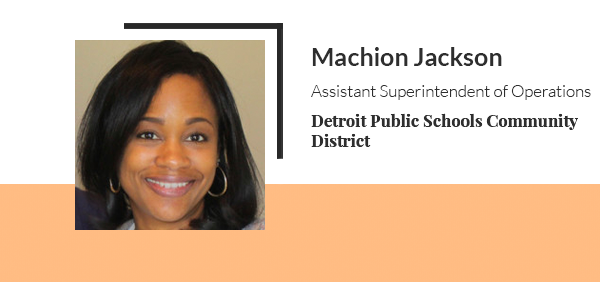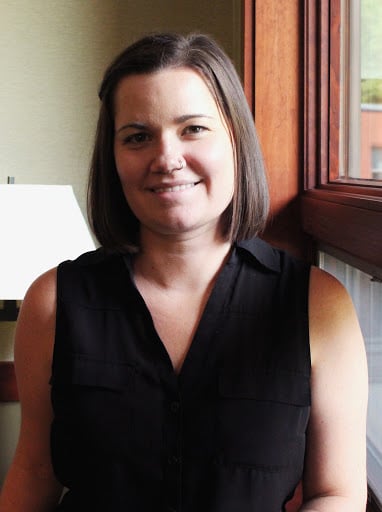Each day, tens of millions of students walk the halls of public schools in the United States and its territories. These students are there to get a quality education, but the state of their schools could be a deterrent to learning.
Outdated heating and cooling systems, crumbling walls and poor air quality are just some of the issues plaguing America’s public schools, according to the American Society of Civil Engineers’ 2017 infrastructure report card.
Accessing funds to improve on these issues can be a struggle for some school districts. In fact, a 2016 report from the 21st Century School Fund found that America’s school districts would need access to $46 billion more in funding each year to maintain what the organization considers “safe and healthy” learning environments.
Still, many districts are finding creative ways to access funds, even if they can’t tackle every improvement on their facilities’ wish lists.
“It is a challenge,” says Kemith Thompson, executive director of operations for the Clayton Community School District in Georgia, says of accessing enough funds to complete capital improvement plans each year.

Looking To The Community
“Much of our funding is dictated by our board of education policies,” Thompson says. “Our district is a bit more conservative; they don’t like to take on debt.”
For that reason, the district relies on a mix of state and local funds, recently passing a new five year special-purpose local-option sales tax (SPLOST) to fund facility plans.
Through the measure, which is voted on by the residents in Clayton County, the district will receive one penny of every sales tax dollar in the county. Designated to the school district, those funds are used for new construction, modification and renovation projects.
The SPLOST that just passed will provide approximately $280 million over the next five years to help fund the construction of a high school, middle school and a career and college academy, as well as finish construction and renovations of a current high school.
“You need to communicate to citizens what the projects are and what they get out of this.”
“Historically, the community wants to see that you're going to do what was promised.” Thompson maintains that having well researched plans and a robust community campaign is of major importance. “You need to communicate to citizens what the projects are and what they get out of this.’”
Over the years, the district has put a lot of thought into their strategies, ensuring they are addressing the needs of each community in the district.
“One community wanted a new high school, so we packaged our marketing efforts to ensure they get a high school,” Thompson says. “We've been strategic in what we’re giving the communities and continue standing behind those commitments and showing that we spend dollars as intended.”
That strategy seems to be paying off. Thompson notes that the most recent SPLOST measure received a 70% approval from the community, the largest turnout.
Renting Facilities
When schools aren’t being used for learning, many districts find they provide an incremental, but sometimes significant, revenue generator.
For instance, Thompson notes that Clayton schools lease their facilities to groups and organizations looking for space to meet or hold events.
“Portions of those funds go to the district for security and other ancillary charges, but for the most part the funds go back to the school for activities,” he says.
Additionally, while Thompson suggests all districts should have a robust facilities use platform, the funds generated might not be worth the hassle.
“A lot of times damage can occur on these facility use agreements,” he cautions. “We try to avoid those damages so we have to be careful who you lease to.”
At the Guam Department of Education, there is a similar facility use policy that allows schools to charge for the use of their buildings. The district has turned to renting out their facilities on a larger scale.
“We just moved facilities maintenance to the main building so that we could rent the building and land,” Quidachay says. “We’d planned that last year, knowing that we’d be short for this fiscal year.”
Seeking Grants
Quidachay notes that the school district relies heavily on their Governor’s realignment funding, but has recently had luck receiving grants from the Department of Interior, thanks to a partnership with the Guam Power Authority.
The two entities applied for grants toward LED light retrofits. Last year, the funds covered retrofitting three schools, while the most recent funding, which was announced just last week, will cover two schools.
“The plan is to hopefully get that on a yearly basis,” Quidachay says. “LED retrofitting is very expensive. At 35 schools having an average age of 46.5 years, the retrofitting will certainly help.”
Creating Partnerships
The Detroit Public Schools Community District finds itself in an unusual position when it comes to funding for facilities.
“Interestingly enough, our story will differ greatly from other districts,” says Machion Jackson, Assistant Superintendent of Operations. “We really are a new district. Detroit Public Schools has been in operation since the 1800’s. However, due to an enormous amount of debt, we restructured three years ago.”
Once called Detroit Public Schools, the Michigan legislature replaced DPS with Detroit Public Schools Community District in an effort to reorganize in 2016. The original district now only subsists to recompense debts.
Due to this change, DPSCD was not given the opportunity to borrow funds for its operations.
“We had to be creative in utilizing our philanthropic community and found unique ways to use our surplus balance,” Jackson says.
In 2018, the district determined there were contaminates in the schools and without the opportunity to borrow they had to think creatively to fix the problem.
“We had to be creative in utilizing our philanthropic community and found unique ways to use our surplus balance”
“We launched a campaign to address our water,” Jackson notes of the project with a price tag close to $3 million. “There were press releases, considerable press coverage and our partnerships department reached out to many of our community partners, like Delta Dental, General Motors and the United Way.”
In the end, these partners raised the funds to cover the project.
“That was very unique with the district,” Jackson notes. “It hadn’t happened before. It showed the public and philanthropic community that we had regained the trust of those entities.”
As a result, the philanthropic community began to search for opportunities to donate to the district. Jackson added that one upcoming project with donors could even focus on playground improvements.

Using Surpluses Carefully
When DPSCD reorganized in 2016, it found itself with a significant teacher shortage totaling 275 vacancies.
“You don’t budget for those,” Jackson says. “So we had a surplus of funds at the end of the year. We used those funds as one-time expenses for facility improvements.”
The following year, 2017, the vacancies were cut in half, but there was still a surplus. Those funds were once again used to attend to the district’s buildings.
“We’ve reduced those vacancies to 75 teachers, which is good,” she revealed. “But on the facility side, that was my surplus funding to attend to issues that were plaguing us. We’re committed to thinking creatively and we’re up for the challenge. We’re looking critically at our largest needs: investing in our facilities and talent. We are definitely turning a corner.”
Modernizing Processes
Back in Guam, Quidachay says the district has found creative ways to use the funds and materials they already have.
“We’ve modernized repairs and improved the quality of workmanship on repairs so they last longer,” he says. “We’re also trying to get away from the waste of inventory.”
"You have to plan way ahead of the curve so you can at least get ahead of some of the projects that have been put off"
Since Guam doesn’t have many on-island manufacturers, the district must plan ahead to have supplies shipped. This summer, their district planned for the following summer 2020 projects.
“If you know you'll be short each year, you have to plan way ahead of the curve so you can at least get ahead of some of the projects that have been put off for so many years,” he notes.
In Detroit, Jackson adds that DPSCD is prioritizing its needs and considering the standardization of equipment and mechanical systems.
“By prioritizing some for those standardization practices, when something does hit and you have to replace a system, you can build on to that by standardizing controls,” she notes. “Standardization will ultimately reduce costs.”

Planning For The Future
While you might not always be able to predict when an HVAC system will sputter to a stop or when a roof’s patch isn’t no longer enough, trying to plan for these issues is of paramount importance to districts.
Quidachay, Thompson and Jackson each put an emphasis on having clear, strategic plans for their schools’ facilities. In the long run, planning ahead can save.
“It’s best to continuously do your facilities needs assessment,” Thompson notes. “Knowing whether to allocate funds towards a new construction, renovation, or continue down the path of maintaining and patching. At the highest level, it’s necessary to make strategic decisions that’ll push you in the direction you’re going in.”
Once these needs are identified, Thompson notes, districts will better grasp the funding needed from the community or state funding they may be eligible for.
“A lot of districts might not know what they are eligible for because they don’t know what their needs are,” Thompson remarked on the importance of researching local and state funding options.
It’s this type of planning that has helped the New York City Department of Education.
“While we are still recovering from prior decades of deferred maintenance and underfunding, the City has made substantial capital investments"
“While we are still recovering from prior decades of deferred maintenance and underfunding, under Mayor Bill de Blasio and Chancellor Richard Carranza, the City has made substantial capital investments,” says Karin Goldmark, Deputy Chancellor at NYC Department of Education.
In fact, Goldmark notes that “for the first time ever, the DOE’s current, $17 billion Five Year Capital Plan allows us to address all of the new capacity needs we have; make significant progress on building accessibility; address pressing capital project needs in existing buildings; and significantly upgrade bandwidth in our schools.”
Though districts have found a number of creative ways to access funding gaps in the facilities department, they’re always on the lookout for the next opportunity. As Quidachay puts it, they're still on the lookout for the “holy grail” of funding.

Posted by
Join us at the K12 Facilities Forum!
The community for district and facilities leaders
Nov 8-10, 2026 | San Antonio, TX










-3.png)

Comments